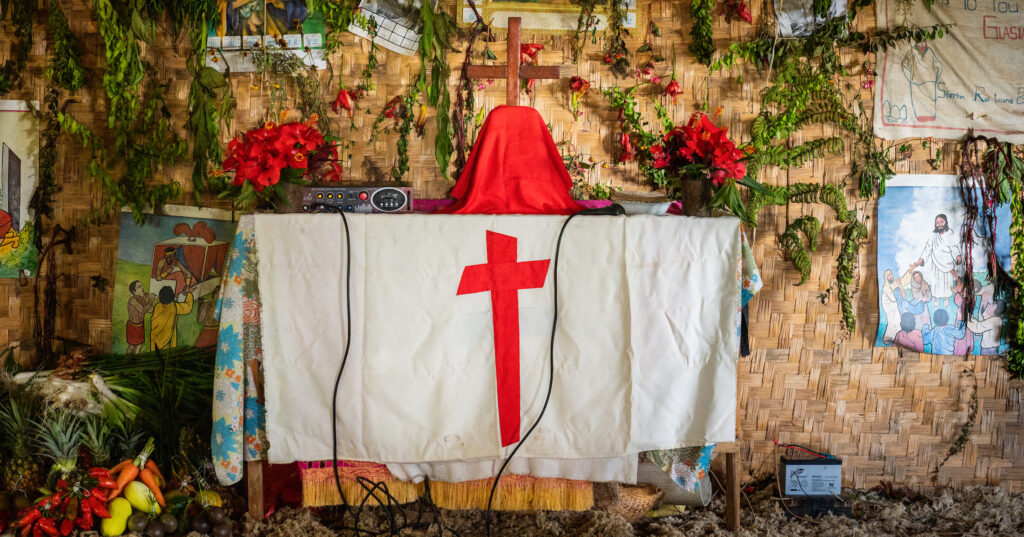By Cory J. Rajek
“All have sinned and fall short of the glory of God, and are justified by His grace as a gift, through the redemption that is in Christ Jesus, whom God put forward as a propitiation by His blood, to be received by faith” (Rom. 3:23–25). Justification by grace through faith is the “highest article of faith,” wrote Martin Luther: “If you either discard it … or pervert it … neither the church nor can God retain His glory.”[1]
Likewise, justification is central to the work of the LCMS Office of International Mission (OIM). As you will read in the following pages, the OIM works across four mission regions: Asia, Eurasia, Latin America and the Caribbean, and Africa. Our work is organized around three central pillars: spreading the Gospel, planting Lutheran churches and showing mercy. Yet it is the central pillar, planting Lutheran churches, that is key to fulfilling our mission. An ecclesial, or church-planting, approach is the most faithful and effective way to do mission work internationally. The core of the OIM’s mission work is planting local Lutheran congregations that are theologically accountable and organizationally sustainable.
The church is not merely a social institution, but a community of believers gathered around Word and Sacrament.[2] There we see Christ present and active, creating faith, making disciples and forgiving sins through the means He has promised.[3] As Lutheran theologian Friedrich Wilhelm Hopf wrote in 1967, “[The] Lutheran church can do only Lutheran mission, and Lutheran mission can be done only by a Lutheran church. … Lutheran mission must lead to [a] Lutheran church.”[4]
The Lutheran Confessions identify the church by its outward marks: the Word of God purely taught and the Sacraments rightly administered.[5] These marks bring clarity to the church and its mission worldwide. Our Lord promises that where these are, the Holy Spirit is at work and the church is present. Mission centered on the doctrine of the church (AC VII) provides a level of accountability. Centering mission activities around the church in Word and Sacrament guards against trends of social activism or other practices that may stray from the church’s mission.
Further, a church-planting approach to mission leads naturally to strong catechetical teaching centered in the Gospel. As our missionaries plant new Lutheran churches, they must train up steadfast Lutherans in those places to sustain the congregations. These members are spurred on to serve and grow as they are integrated into the life of the church (Eph. 4:15–16; 2 Peter 1:10–11; Heb. 13:7). The ecclesial approach to mission fosters mature, knowledgeable believers, sowing the seeds of a sustainable believing community that will flourish, by God’s grace, for generations to come (Psalm 145:4).
Planting a Lutheran church in a community also provides a visual reminder of the church’s embodiment of the Gospel in its life together. The presence of a physical congregation encourages growth toward a self-supporting, self-governing, self-propagating and self-theologizing faith community. A stable and theologically sound congregation can be a powerful witness.
Church planting is at the heart of strong international mission, providing accountability (to the true teachings revealed in Scripture and the Lutheran Confessions) and sustainability (spreading the Gospel and showing mercy for generations to come). By understanding Word and Sacrament as the primary means through which God carries out His mission in the world, the ecclesial approach walks in harmony with Christ’s directive in the Great Commission.[6] For these reasons, church planting has been and will remain the central focus of the OIM and the work we do around the world.
[1] WA 43, 178. See also AC IV; Rom 1:17; 3:21–26; Matt 28:19–20.
[2] AC VII; Ap VII 5; 1 Cor 12:27.
[3] AC IV 5.
[4] Friedrich Wilhelm Hopf, “The Lutheran Church Plants Lutheran Missions,” Journal of Lutheran Mission (April 2015): 6. Hopf was quoting the text of resolutions affirmed by a 1889 convention of German Lutherans.
[5] AC VII.
[6] See Matt. 28:19–20, where our Lord informs us how disciples are made (i.e., “baptizing … teaching”).

This article originally appeared in the November 2024 issue of The Lutheran Witness.
Cover image: LCMS Communications/Erik M. Lunsford.






Glory be to God, The Father, The Son and The Holy Spirit for our LCMS Missionaries! How blessed are those who are brought to Saving Faith in Jesus, our Beloved Savior through Word & Sacrament!